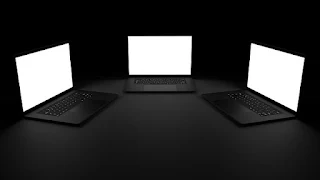Comprehensive Guide to Troubleshooting Laptop Power Issues
Few experiences are as frustrating as pressing your laptop’s power button and receiving no response. Before considering a costly replacement, it’s essential to understand that many power-related issues can be resolved through systematic troubleshooting. This guide provides a detailed, step-by-step approach to diagnosing and fixing common problems that prevent laptops from turning on.
1. Verify the Power Source
• Check the Power Adapter and Cord: Ensure the power adapter is securely connected to both the laptop and the wall outlet. Inspect the cord for any visible damage, such as fraying or cuts.• Test the Outlet: Plug another device into the same outlet to confirm it’s supplying power. Alternatively, try connecting your laptop to a different outlet.
• Use a Known-Good Charger: If possible, borrow a compatible charger from another device to rule out issues with your charger.
2. Inspect the Battery
• Remove and Reinsert the Battery: If your laptop has a removable battery, power down the device, remove the battery, wait a few moments, then reinsert it securely.• Attempt to Power On Without the Battery: With the battery removed, connect the laptop to the power adapter and try turning it on. If it powers up, the battery may be faulty and require replacement.
3. Perform a Power Reset
• Drain Residual Power: Disconnect all external devices and power sources. Press and hold the power button for approximately 15 seconds to discharge any residual electrical charge.• Reconnect and Restart: Reconnect the power adapter (leave the battery out if it’s removable) and attempt to power on the laptop.
4. Examine Display Issues
• Check for Indicator Lights: If the laptop’s power light turns on but the screen remains blank, the issue might be with the display.• Connect to an External Monitor: Use an appropriate cable to connect your laptop to an external monitor or TV. If the external display shows your desktop, the laptop’s screen or related components may be defective.
5. Assess Hardware Components
• Listen for Beep Codes: Some laptops emit beep sounds during startup to indicate hardware issues. Refer to your laptop’s manual to interpret these codes.• Reseat RAM and Storage Drives: Loose RAM or storage drives can prevent booting. If comfortable, open the laptop’s casing to reseat these components. Ensure the device is powered off and unplugged before doing so.
6. Investigate Peripheral Devices
• Disconnect All External Devices: Remove USB drives, external monitors, keyboards, and other peripherals. A malfunctioning external device can interfere with the startup process.• Attempt to Power On: With all peripherals disconnected, try turning on the laptop. If it powers up, reconnect devices one by one to identify the culprit.
7. Boot in Safe Mode
• Access Safe Mode: For Windows laptops, press the power button and immediately start pressing the F8 key (or the key designated by your manufacturer) to access the Advanced Boot Options menu. Select “Safe Mode” and press Enter.• Mac Users: Press and hold the Shift key immediately after turning on your Mac until the Apple logo appears.
• Diagnose Software Issues: If the laptop boots in Safe Mode, a recently installed program or driver may be causing the problem. Uninstall any suspicious software and restart normally.
8. Reset BIOS/UEFI Settings
• Access BIOS/UEFI: Restart the laptop and press the designated key (often F2, F10, or Delete) during startup to enter the BIOS/UEFI menu.• Restore Default Settings: Navigate to the “Load Setup Defaults” option (or similar) to reset BIOS/UEFI settings to their default values. Save changes and exit.
9. Consider Overheating Issues
• Check for Overheating: Overheating can cause laptops to shut down or fail to start. Ensure the vents are not blocked and clean any dust buildup using compressed air.• Listen for Fan Activity: If the cooling fan isn’t operating, it may need replacement.
10. Seek Professional Assistance
• Persistent Issues: If none of the above steps resolve the problem, there may be a more serious hardware issue, such as a faulty motherboard or processor.• Contact Support: Reach out to the laptop manufacturer’s customer support or visit a certified technician for a thorough diagnosis and repair.
Preventive Measures
• Regular Maintenance: Keep your laptop clean and free from dust. Regularly update your operating system and drivers to ensure optimal performance.
• Use Surge Protectors: Protect your laptop from power surges by using surge protectors, especially during storms.
• Avoid Overcharging: Unplug the charger once the battery is fully charged to prolong battery life.
Conclusion
While a non-responsive laptop can be alarming, many power-related issues are solvable with systematic troubleshooting. By following the steps outlined in this guide, you can identify and often resolve the problem, potentially saving time and money. If challenges persist, seeking professional assistance is advisable to prevent further damage.Additional Resources
For a visual walkthrough of these troubleshooting steps, consider watching the following video:
How to Fix - Any Laptop That Won’t Turn On / No Power / Freezes or Turns Off at Start Up
Note: Always ensure your laptop is powered off and unplugged before attempting any internal inspections or hardware adjustments. If you’re uncomfortable performing any steps, it’s best to consult with a professional technician.



